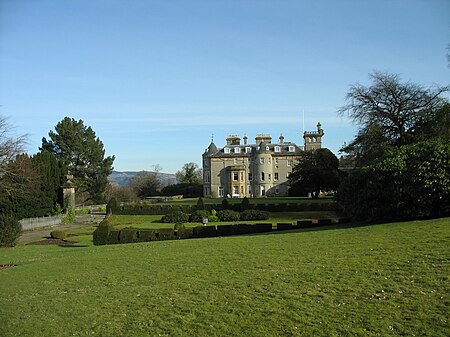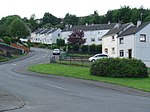Finlaystone House
Category A listed buildings in InverclydeCountry houses in InverclydeInventory of Gardens and Designed LandscapesListed houses in ScotlandTourist attractions in Inverclyde

Finlaystone House is a mansion and estate in the Inverclyde council area and historic county of Renfrewshire. It lies near the southern bank of the Firth of Clyde, beside the village of Langbank, in the west central Lowlands of Scotland. Finlaystone was a property of the Dennistoun family, and passed to the Cunninghams in the 15th century. It was the seat of the Earl of Glencairn until 1796, and is now the property of the Chief of Clan MacMillan. The house is protected as a category A listed building, and the grounds are included in the Inventory of Gardens and Designed Landscapes in Scotland, the national listing of significant gardens.
Excerpt from the Wikipedia article Finlaystone House (License: CC BY-SA 3.0, Authors, Images).Finlaystone House
Greenock Road,
Geographical coordinates (GPS) Address Nearby Places Show on map
Geographical coordinates (GPS)
| Latitude | Longitude |
|---|---|
| N 55.9287 ° | E -4.6191 ° |
Address
Greenock Road
Greenock Road
PA14 6UX , Park Farm
Scotland, United Kingdom
Open on Google Maps







